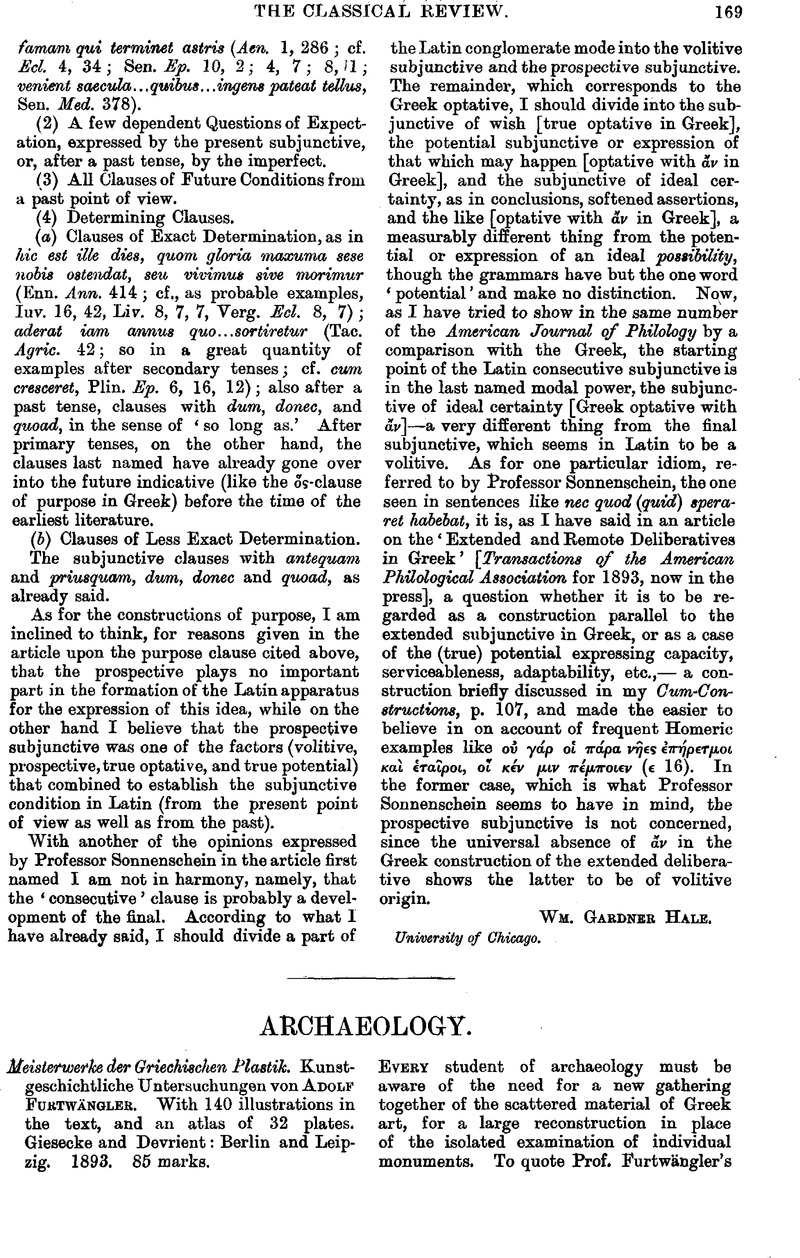No CrossRef data available.
Published online by Cambridge University Press: 27 October 2009

page 170 note 1 It is a replica of the head of the Farnese Athena (Naples).
page 171 note 1 In the February number of this Review Mr. Ernest Gardner has endeavoured to do away altogether with the Hegias tradition by proposing to force Hageladas, or more possibly Ἡγελάδας, out of the H⊓OY or I⊓⊓OY of our MSS. of Dio Chrysostom (instead of the perfectly satisfactory H┌IOY Y of K. 0. Müller). As Mr. Gardner merely suggests that the three letters AAΔ ‘might easily lead to the contraction of the name,’ and as he does not give the palaeographie form of the emendation he proposes, it is somewhat difficult to judge of its soundness. For the present Furtwängler's explanation seems simpler than a violent textual emendation.
page 171 note 2 On the other hand F. thinks that works like the the Vatican ‘Aktaion,’ a head in Munich (Fig. 21) and one in the Capitol (Fig. 4), though of the same period as the Terme Apollo, are not to be attributed to Pheidias but to some contemporary. This may be Praxias the pupil of Kalamis. To this same Praxias F. inclines to attribute the Athena with the wolf helmet of the Villa Albani and the ‘Lysias’ in the same collection. For Kalamis he claims the Hestia Giustiniani, the Apollo on the Omphalos, the charioteer of the Capitol, the so-called. Aspasia, etc. A number of Apollos that have generally been roughly classed under Overbeck's ‘Cassel type’ are apportioned by F., after a minute analysis of their stylistic qualities, among the following different artists: Hegias—Apollo of Mantua, Kritios—Apollo Pitti (in the private apartments of the palace; it is astonishing that this exquisite statue should have passed unperceived until now); Kalamis—Apollo on the Omphalos; Myron—Cassel Apollo; Pheidias— Apollo of the Terme; the Apollo of the Capitol (Helbig, Führer 500) F. attributes to a sixth artist whom he leaves unnamed.
page 175 note 1 Cf. Arch. Anzeiger for 1891 p. 70, where Furtwangler had indicated the main lines of his present theory, and my note in the Class. Rev. vi. (1892) p. 369.Google Scholar
page 175 note 2 The terra-cotta antefix from Lanuvium, fig. 32, has now been published more accurately by Mr. Murray, A. S. (J.H.S. vol. xiii. p. 316).Google Scholar